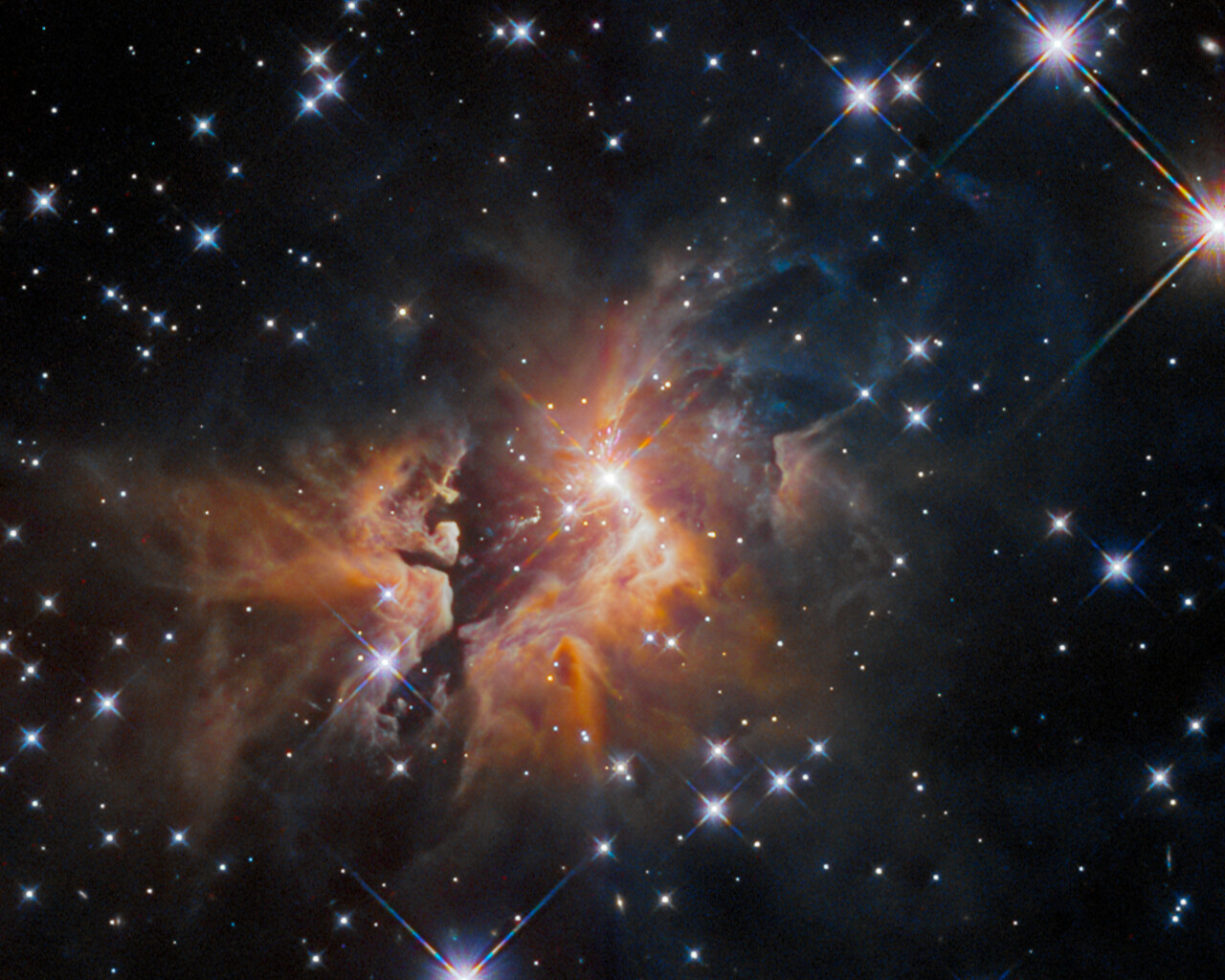Hubble observes enigmatic explosion 9000 light-years away from Earth

This image from the NASA/ESA Hubble Space Telescope shows a bright young star surrounded by a shroud of thick gas and dust. Known to astronomers as IRAS 05506+2414, this young stellar object being inspected by Hubble lies over 9000 light-years away in the constellation Taurus and is thought to be an example of an explosive event caused by the disruption of a massive young star system.
Astronomers used Hubble's Wide Field Camera 3 (WFC3) to measure how far is IRAS 05506+2414 from Earth and understand the earliest stages in the lives of massive stars.
Generally, the swirling discs of material surrounding a young star are funnelled into twin outflows of gas and dust from the star. However, in this case, a fan-like spray of material travelling at velocities of up to 350 kilometres per second is spreading outwards from the centre of this image.
"While it is possible to measure the velocity of material speeding outwards from the star, astronomers cannot tell how far from Earth the star actually is from a single observation. However, by measuring the distance that the outflow travels between successive images, they will be able to infer the distance to IRAS 05506+2414," the European Space Agency said in a statement.
1/ This Picture of the Week shows a bright young star shrouded by gas and dust, thought to be an explosive event caused by the disruption of a massive young star system. Read more: https://t.co/bUy0XzBrcb pic.twitter.com/L9gksWt38z
— HUBBLE (@HUBBLE_space) September 19, 2022
The Hubble Space Telescope has beamed back hundreds of thousands of celestial images since its launch in April 1990. The premium space-based observatory can watch the universe in visible, near-infrared and ultraviolet light. WFC3 was installed on the telescope during Hubble Servicing Mission 4 in 2009 and the powerful instrument has imaged everything from nearby star formation to galaxies in the very distant universe.










